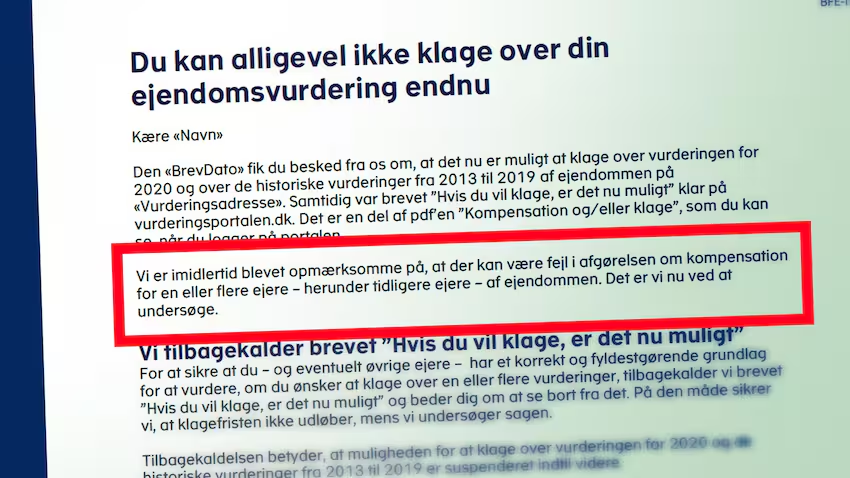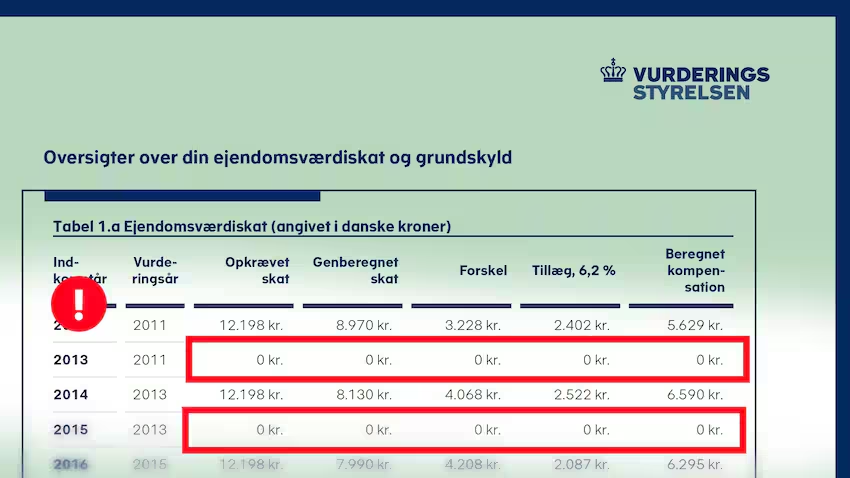A recent malfunction in the Danish tax authority‘s (Skattevæsnet) automated system has led to erroneous deductions from homeowners, raising concerns about systemic issues and potential legal violations. Experts are now questioning the reliability of the new property tax refund system and the lack of transparency in its decision-making process.
Automated system errors affect homeowners
The Danish tax authority introduced an automated system, referred to as a “robot”, to manage property tax assessments and refunds. This system was designed to automatically calculate refunds for homeowners who overpaid property taxes between 2011 and 2020. However, a serious flaw in the system has led to incorrect calculations in nearly 700 cases, with certain years being excluded from the refund offers without explanation.
In some instances, property owners who were due compensation found that their tax assessments had been incorrectly recalculated, reducing or entirely eliminating the refunds they were supposed to receive. The automated process meant that these errors occurred without individual case reviews, leaving homeowners unable to challenge the system’s decisions effectively.

Experts warn of legal violations and lack of transparency
Legal experts have expressed alarm over the implications of these errors. Rasmus Grønved Nielsen, an associate professor of administrative law at the University of Copenhagen (Københavns Universitet), described the issue as a systemic failure that has financially impacted a significant number of homeowners. He emphasized that while occasional errors are expected in any system, the widespread nature of this problem suggests fundamental flaws in the automation process.
Sten Schaumburg-Müller, a law professor at the University of Southern Denmark (Syddansk Universitet), further criticized the tax authority for failing to provide clear explanations in its decisions. He suggested that the absence of justification in the refund recalculations could violate GDPR regulations, making the actions legally questionable. “The system lacks transparency, and citizens have no way of understanding or appealing these automated decisions,” Schaumburg-Müller stated.
Homeowners left without recourse
Currently, homeowners affected by these errors have few options for rectifying the situation. The tax authority has withdrawn certain refund offers without providing details on why specific years were excluded from the calculations. This lack of clarity has left many in financial uncertainty, with no formal process available to contest the decisions.
The Danish Parliament’s Ombudsman is now reviewing the tax authority’s handling of these cases, following numerous complaints from property owners. The scale of the issue has led to increasing pressure on the government to provide a clear resolution for affected homeowners.
Calls for system review and possible suspension
The persistent problems with the automated tax refund system have led experts to call for a full review of its reliability. Grønved Nielsen suggested that if the system continues to produce such widespread errors, a temporary suspension may be necessary to address the flaws before further damage is done.
“At some point, you have to ask whether this system is functional enough to remain in operation,” he stated.

Government response and future actions
In response to the controversy, the tax authority has acknowledged the errors and stated that they are awaiting legislative changes to allow for corrections. Anne-Sofie Jensen, director of the Property assessment agency (Vurderingsstyrelsen), assured that affected homeowners would be contacted once a legal framework for rectifying the mistakes is in place. “
Our focus is to find solutions that ensure no homeowner suffers financial loss due to this error,” she said in a written statement.
However, no specific timeline has been provided for these corrections, leaving affected homeowners uncertain about when—or if—they will receive the refunds they are owed.
Implications for the future
This incident highlights the risks associated with relying on automated systems in public administration, particularly when financial decisions affecting citizens’ livelihoods are at stake. The Danish case serves as a cautionary tale for other governments considering similar digital automation initiatives. Ensuring transparency, accountability, and a robust appeals process will be crucial to maintaining public trust in automated governance systems.





